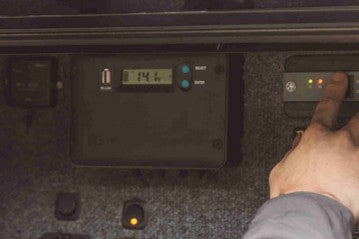
In today's rapidly advancing world, solar energy has emerged as a promising and sustainable source of power. With increasing environmental concerns and a growing demand for renewable energy solutions, many homeowners and businesses are turning to solar power to meet their electricity needs. One crucial component of a solar energy system is the solar inverter, which converts the direct current (DC) produced by solar panels into alternating current (AC) that can be used to power our homes and offices. While traditional single-phase inverters have been widely used, the advent of split-phase solar inverters has brought about significant advantages. In this article, we will delve into the reasons why we need split-phase solar inverters and how they can enhance the efficiency and effectiveness of solar power systems.
1. Understanding the Basics of Solar Inverters
Before we explore the benefits of split-phase solar inverters, let's briefly review the role of solar inverters in a solar energy system. Solar panels generate electricity in the form of DC, which is then converted into usable AC power by the solar inverter. This AC power can be seamlessly integrated into the electrical grid or used directly to power our appliances and devices. The inverter's primary function is to ensure that the energy generated by the solar panels is efficiently and effectively utilized.
2. The Advantages of Split-Phase Solar Inverters
2.1. Flexibility and Compatibility:
One of the key reasons why split-phase solar inverters are gaining popularity is their flexibility and compatibility with different types of electrical systems. In many countries, residential electrical systems are designed to operate on a split-phase system, which consists of two 120-volt phases with a 180-degree phase shift. By using a split-phase solar inverter, homeowners can seamlessly integrate solar power into their existing electrical infrastructure without the need for costly modifications. This compatibility makes split-phase inverters an ideal choice for residential solar installations.
2.2. Increased Power Output:
Split-phase solar inverters offer a significant advantage in terms of power output. Traditional single-phase inverters have limitations when it comes to the amount of power they can handle. However, split-phase inverters divide the load between the two phases, allowing for higher power capacity. This means that you can connect more solar panels to your system, thereby increasing the overall power output of your solar energy system. With a split-phase inverter, you can fully harness the potential of your solar panels and maximize the energy production.
2.3. Enhanced Efficiency:
Efficiency is a crucial aspect of any solar energy system, and split-phase solar inverters excel in this area. By distributing the load across two phases, split-phase inverters minimize losses due to imbalances and ensure a more even distribution of power. This results in higher overall system efficiency and better utilization of the generated solar energy. Additionally, split-phase inverters often employ advanced MPPT (Maximum Power Point Tracking) technology, which optimizes the performance of solar panels, further enhancing the efficiency of the system.
3. Cost Savings and Return on Investment
Investing in solar energy systems is not only an environmentally conscious decision but also a financially beneficial one. Split-phase solar inverters contribute to cost savings and a higher return on investment in several ways. First, the increased power output and efficiency of split-phase inverters enable homeowners to generate more electricity and reduce their reliance on grid-supplied power. This translates into lower electricity bills and significant savings over time. Additionally, some regions offer incentives and feed-in tariffs for solar power system owners, further boosting the financial benefits of using split-phase solar inverters.
4. Grid Resilience and Backup Power
Incorporating split-phase solar inverters into your solar energy system can enhance grid resilience and provide backup power during grid outages. With the ability to operate independently from the grid, split-phase inverters equipped with battery storage solutions can store excess solar energy generated during the day and supply power to your home or business when the grid is down. This ensures a reliable and uninterrupted power supply, even during unforeseen events or natural disasters, offering peace of mind to solar system owners.
Conclusion
Solar energy has emerged as a viable solution to our growing energy needs, and solar inverters play a pivotal role in harnessing the power of the sun efficiently. The advent of split-phase solar inverters has revolutionized the way we integrate solar power into our homes and businesses. The flexibility, increased power output, enhanced efficiency, cost savings, and grid resilience offered by split-phase inverters make them an ideal choice for anyone looking to invest in solar energy systems. By choosing split-phase solar inverters, customers can enjoy the benefits of clean, renewable energy while contributing to a sustainable future for generations to come. Embrace the power of the sun with split-phase solar inverters and unlock the full potential of solar energy in your life.


0 Kommentare